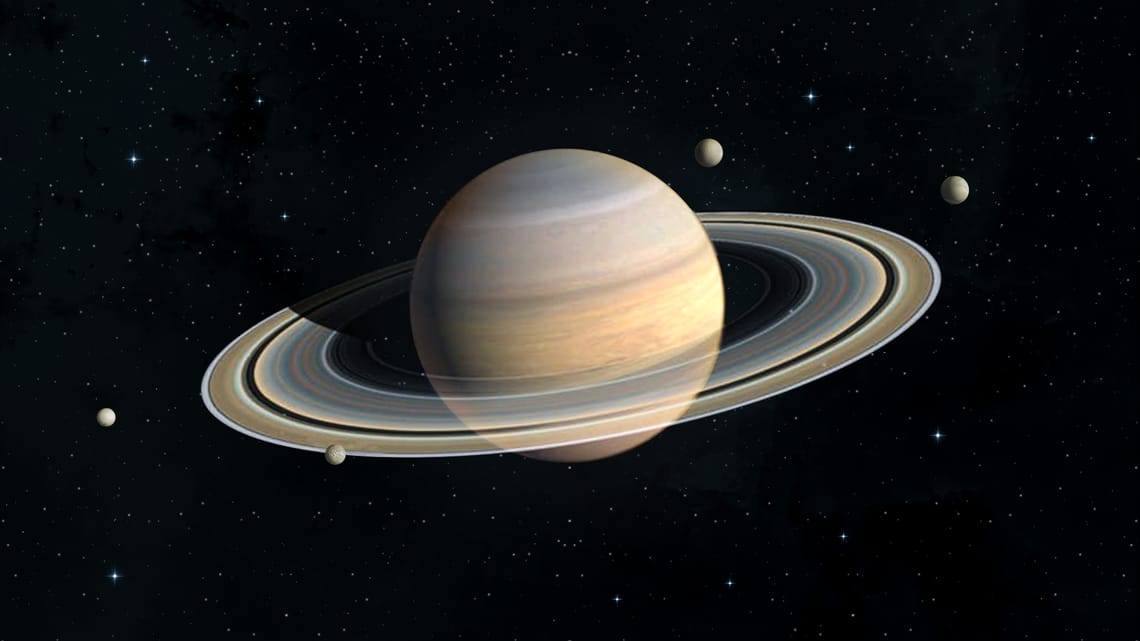
Saturn is an unusual planet in some obvious ways, most notably its extensive ring system. But it's also strange in some less obvious ways: The rings appear to be far, far younger than the planet, and they stay stably in the plane of Saturn's orbit while the planet's axis of rotation wobbles around dramatically.
A new modeling study released in yesterday's edition of Science suggests that these oddities have the same explanation. It hypothesizes that Saturn had an additional moon that enabled gravitational interactions that explains the planet's large wobble. In the process of those interactions, however, the moon spun out of orbit, got close to Saturn, and was destroyed, creating the ring material. While the models don't tell us this is definitively what happened, they can provide some indications of what we need to look for to determine how probable these events were.
Explaining the oddities
The Solar System is over four billion years old. If we're to assume that it has always looked much like it currently does, that would seem to put a premium on stability. Yet, the Saturn system is very dynamic. The largest moon, Titan, is moving away from the planet; geysers on another, Enceladus, feed material into one ring; small moons are condensing out of the materials of other rings. So there are reasons to think that Saturn hasn't always looked like it currently does.
One of the things that isn't likely to have been stable is the rings. Scientists have estimated their age as about 100 million years, based on interactions with the nearby moons and the color changes that accumulate over time in a high-radiation environment. While there's some disagreement regarding the 100 million year figure, explaining their presence at this point in the Solar System's history remains a challenge.
Not content with that challenge, the team behind the new work threw in a second: Saturn's large rotational wobble, where its axis of rotation is over 25° from being perfectly vertical relative to the plane of Saturn's orbit. That's too large to have been produced during the planet's formation.
In this case, we have some ideas regarding how this might come about later in the planet's history. Saturn can enter what's called an "orbital resonance" with Neptune. Normally, gravitational interactions among planets average out over millions of years. But in a resonance, orbital periods line up so that specific configurations of bodies appear repeatedly. In this case, some gravitational interactions can end up being reinforced rather than averaging out, causing effects that build over time. In the case of Saturn and Neptune, a resonance could potentially influence the orientation of Saturn's poles.
While the math works out, we haven't known enough about some of the details of the Saturn system to determine whether it actually has a resonance with Neptune. But thanks to decades of data from the Cassini spacecraft, we now have the data we need to narrow down uncertainties.



3175x175(CURRENT).thumb.jpg.b05acc060982b36f5891ba728e6d953c.jpg)

Recommended Comments
There are no comments to display.
Join the conversation
You can post now and register later. If you have an account, sign in now to post with your account.
Note: Your post will require moderator approval before it will be visible.